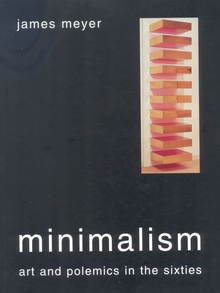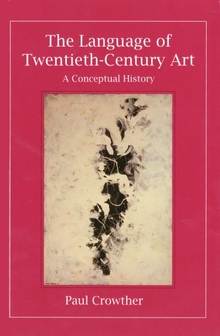Minimalism
WARNING
You are viewing an older version of the Yalebooks website. Please visit out new website with more updated information and a better user experience: https://www.yalebooks.com
Art and Polemics in the Sixties
James Meyer
What is minimalism? The answer to this simple question has defied simple answers. In this highly readable history of minimalist art James Meyer argues that "minimalism" was not a coherent movement but a field of overlapping and sometimes opposed practices. He traces in comprehensive detail the emergence of six figures associated with the development—Carl Andre, Dan Flavin, Donald Judd, Sol LeWitt, Robert Morris, and Anne Truitt—and how the notion of minimalism came to be constructed around their art in the 1960s. Despite distinctive differences in method and points of view, Meyer shows, these artists became equated in a series of important exhibitions and texts that led to their designation as minimalists.
Beginning with the first reviews of minimalist shows, the book tracks the development of an art that critics dubbed Cool Art, ABC Art, and Primary Structures before settling on the deprecating label "minimal art.” Suggesting that such work was overly reduced in form and facture, this term implied that the new abstraction was barely legible as fine art to some viewers. Meyer describes the heated polemic that unfolded in response to these practices, the differing claims of the artists, and the sometimes intense rivalries that developed within a highly competitive, fashion-minded New York art scene. The book culminates with an analysis of minimalism’s canonization in the late sixties, its reception in Europe, and its discrediting by leftist viewers who associated the new art with American capitalist-imperialism of the Vietnam War.
Beginning with the first reviews of minimalist shows, the book tracks the development of an art that critics dubbed Cool Art, ABC Art, and Primary Structures before settling on the deprecating label "minimal art.” Suggesting that such work was overly reduced in form and facture, this term implied that the new abstraction was barely legible as fine art to some viewers. Meyer describes the heated polemic that unfolded in response to these practices, the differing claims of the artists, and the sometimes intense rivalries that developed within a highly competitive, fashion-minded New York art scene. The book culminates with an analysis of minimalism’s canonization in the late sixties, its reception in Europe, and its discrediting by leftist viewers who associated the new art with American capitalist-imperialism of the Vietnam War.
James Meyer is Curator in the Department of Modern Art at the National Gallery of Art, Washington, D.C.
“This new volume combines a sophisticated reading of the critical discourse surrounding Minimalism with a step-by-step history of the work’s development and its appearance on the public stage from 1961 through 1968.”—Pepe Karmel, Art in America
"[Meyer’s] aim [is] to enable a detailed look at the historical development of Minimalism. . . . Any student of the period should be grateful for Meyer’s clear account."—Mark Godfrey, Oxford Art Journal
“Meyer’s writing is intelligent, informed, and subtle. The book is well produced and generously illustrated with good quality colour and black and white images.”—John A. Walker, Art Book
Selected by Architects Journal as one of the Books of the Year (2001)
ISBN: 9780300105902
Publication Date: August 11, 2004
Publication Date: August 11, 2004
348 pages, 7 1/2 x 10
130 b/w + 30 color illus.
130 b/w + 30 color illus.








